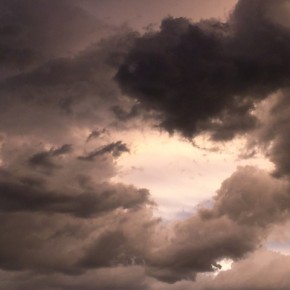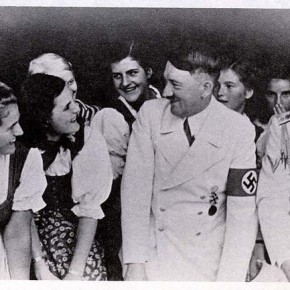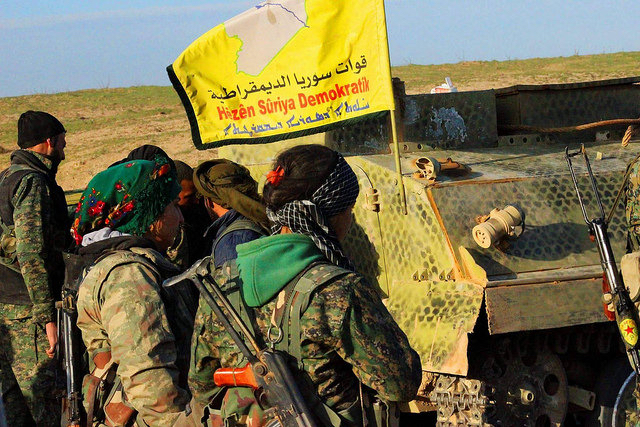“Islamofascism” is nearly three decades old now. Entering popular usage following the 9/11 attacks, it has most recently been repurposed to fit Islamic State. The term was first coined by Malise Ruthven in a 1990 article in The Independent. Ruthven wrote that “authoritarian government, not to say Islamofascism, is the rule rather than the exception from Morocco to Pakistan.”
Ruthven was discussing the manner in which secular “Muslim” dictatorships were increasingly making religious appeals to stay in power. He was particularly interested in the Arab Middle East, with one example being Iraq and Syria under Baathist rule. Embattled regimes were experimenting with Islamist politics after leftist (and particularly Arab nationalist) rhetoric began to lose its appeal.
The problem continues to be obvious. As Katha Pollitt wrote in The Nation, Islamofascism is far more of an emotional label than an analytic one. This is why it was preserved through speeches during the Bush Administration. Not only was Ruthven using it “to describe a broad swath of Muslim bad guys from Osama to the mullahs of Iran,” he also made the mistake of mentioning ‘fascism’ in a manner that “[gets] us to think less and fear more.”
This is first of all hypocritical. Christopher Hitchens argued in Slate that similar to European fascists, Islamic militants “are based on a cult of murderous violence that exalts death and destruction and despises the life of the mind.” Is this helped by the ideological haze generated by a word like Islamofascism, in which Saddam Hussein and Ayman al-Zawahiri are suddenly the same thing? It is more responsibly anti-fascist to avoid using the term “fascism” so freely.
Second of all, thinking less and fearing more in regards to Islamofascism masks the fact that racism is a stronger theme in the word than principled analysis. Rather than illuminating the fascist impulses that are being expressed through certain groups, Islamofascism implies that Islam and Fascism are one and the same. It then reassigns fascist impulses to a terrifying non-Western force, that is disdained by a Western political audience, rather than emphasising that fascism is a possibility that has been generated by concrete foreign policy decisions.
Rigorous analysis needs to be invested in applying a term like Islamofascism not just to Islamic State, but also to movements as diverse as the Afghan and Pakistani Taliban, and Al-Qaida in the Arabian Peninsula in Yemen. Islamic State may be said to be a fascist group, but only cautiously, and for specific reasons. For instance, one of many questions is whether or not its economic structure, what Charles Tripp has called a “rentier caliphate with no new ideas,” can be compared to the European fascination with market enterprise.
Additionally, can the hatred for bid’ah (“innovation”) and kufar (“obscured from the Truth”) that underlies militant rhetoric be used to explain a hatred for artistic works that resulted in the the destruction of Palmyra Temple in Bel? Is it possible to compare it to the destruction of cultural works that occurred in Nazi Germany?
Hitchens explicitly mentions the use of anti-Semitic discourse to justify calling Al-Qaeda Islamofascist, but even here, it isn’t clear that Islamic State is nearly as enamoured with the scientific method. Nazi race theory was clearly “modern” in how it bureaucratised and quantified the concept of Aryanism. Importantly, Islamic State does seem to exhibit the characteristics of a fascist movement, but not because of an even parallel, or the region being uniformly Islamofascist.
Islamic State exhibits fascist characteristics because of the unique political conditions in which it arose, and how they impact the cynicism, bitterness, and rage of people that are operating within its framework. It is not only a direct result of the US-led occupation of Iraq, but also the policies that led up to it. These include the infamous sanctions regime imposed by Security Council Resolution 687.
When we call something fascist, we have to be prepared to explain it as such, based on precise local factors. That is clearly possible in the case of Islamic State. However, as a result of how it is dominantly being analysed with an eye towards foreign invasion, this rich topic has yet to be sufficiently explored. The question should not be the Islam, so much as the nature of fascism, and the conditions in which it may exist.
Islamic State seems to contain the threads of what we may define as “fascism,” but they are not simply voicing themselves through an Islamic framework. Hitchens famously called the September 11 attacks “fascism with an Islamic face.” That neglects the important details that are crucial to anti-fascist political activity. As with the Pakistani Taliban, it is far more helpful to understand the violence as a result of wider processes, especially neoconservative American military policy.
Photograph courtesy of thierry ehrmann. Published under a Creative Commons License.





